
Do you have a question about the Carrier 58MVP 170 Series and is the answer not in the manual?
| Stages | Two-stage |
|---|---|
| Blower Motor | Variable Speed |
| Fuel Type | Natural Gas |
| Heat Exchanger | Stainless steel |
| Ventilation | Direct Vent |
| Warranty | 10-Year Parts Limited Warranty |
Covers safety precautions, code compliance, alert symbols, and guide usage.
Introduces appendices on board layout, schematics, and ECM blower motor.
Explains the diagnostic features of the furnace control using an AMBER LED.
Guidance on starting troubleshooting by following the 'START HERE' step-by-step process.
Describes the sequence of operation through different furnace modes.
Covers power, gas service, thermostat wiring, and limit switch precautions.
Explains adaptive heating with single-stage thermostats and stage switching.
Details furnace operation with two-stage thermostats and stage transitions.
Describes furnace operation during single-stage and two-stage cooling.
Explains Thermidistat operation, including Super-Dehumidify mode.
Details continuous blower operation and heat pump defrost cycles.
Instructions for initiating and performing the furnace component test.
Explains how status codes are indicated by the AMBER LED and their meaning.
Details specific status codes and their associated troubleshooting steps.
Troubleshooting steps for codes 11 (No Previous), 12 (Blower On), 13 (Limit Lockout), 14 (Ignition Lockout), 15 (Blower Lockout), 21 (Gas Heating Lockout).
Troubleshooting steps for status codes 22 (Flame Signal), 23 (Pressure Switch), 24 (Fuse), 25 (Setup Error), 31 (High-Heat Switch), 33 (Limit Fault), 34 (Ignition Fault), 41 (Blower Fault), 42 (Inducer Fault), 43 (Pressure Mismatch), 45 (Control Lockout).
Diagnosing rapid flashing amber LED and low high-heat temperature rise.
Step-by-step process for diagnosing furnace issues using the 'START HERE' chart.
Flowchart for troubleshooting issues indicated by a rapid flashing amber LED.
Steps to diagnose improper cooling airflow, often related to thermostat wiring.
Includes checking voltage, thermostat connections, and cooling unit parameters.
Troubleshooting steps for a low high-heat temperature rise, often due to underfiring.
Focuses on gas valve operation and manifold pressure for temperature rise issues.
Troubleshooting for status code 11, indicating no prior stored codes were found.
Troubleshooting for status code 12, related to blower operation after power restoration.
Troubleshooting steps for status code 13, indicating a limit circuit lockout.
Troubleshooting steps for status code 14, related to ignition failure lockout.
Troubleshooting steps for status code 15, indicating a blower motor lockout.
Troubleshooting steps for status code 21, related to gas heating lockout.
Troubleshooting steps for status code 22, indicating an abnormal flame-proving signal.
Troubleshooting steps for status code 23, pressure switch did not open.
Steps to diagnose issues related to a secondary voltage fuse being open.
Steps to diagnose wiring shorts associated with status code 24.
Troubleshooting status code 24 related to thermostat compatibility or wiring faults.
Diagnosing status code 24 issues related to outdoor unit or cooling cycle.
Troubleshooting steps for status code 25, indicating a model selection or setup error.
Troubleshooting steps for status code 31, related to high-heat pressure switch.
Checking wiring and manifold pressure for status code 31 issues.
Diagnosing status code 31 issues related to venting or inducer motor.
Checking inducer motor PWM signals and pressure drop for status code 31.
Diagnosing status code 31 issues related to venting pipes or drain traps.
Steps to diagnose issues with the low-heat pressure switch for status code 32.
Steps to check wiring and continuity for the low-heat pressure switch.
Diagnosing status code 32 issues with inducer motor and pressure.
Troubleshooting steps for status code 33, indicating a limit circuit fault.
Checking switch continuity, alignment, and model plug for status code 33.
Diagnosing status code 33 issues related to combustion air or blower operation.
Checking overheating, bypass humidifiers, and zone damper issues for status code 33.
Adjusting blower airflow settings to resolve status code 33.
Steps to diagnose ignition proving faults indicated by status code 34.
Checking gas valve and flame sensor for status code 34 issues.
Diagnosing status code 34 related to burner ignition or flame carryover.
Steps to diagnose blower motor faults indicated by status code 41.
Checking blower motor wiring, connections, and 115-vac power supply.
Checking blower motor serial output and voltage signals for status code 41.
Troubleshooting blower motor module and wiring for status code 41.
Troubleshooting steps for status code 42, indicating an inducer motor fault.
Checking inducer motor PWM signals and pressure readings for status code 42.
Diagnosing status code 42 issues related to venting pipes or pressure switches.
Steps to diagnose status code 43, a mismatch in pressure switch states.
Steps to check wiring and continuity for pressure switches related to status code 43.
Troubleshooting steps for status code 45, indicating a control circuitry lockout.
Procedure for cleaning the furnace and performing initial startup.
Diagram showing the layout of the variable speed furnace control board.
Detailed wiring diagrams for the furnace control system.
Comprehensive wiring schematic for the furnace system, including component connections.
Description of the Electronically Commutated Motor (ECM) and its features.
Explanation of ECM blower motor operation and configuration by the furnace control.
Table detailing make/break points for high-heat and low-heat pressure switches.
Diagrams showing locations for reading static pressure in upflow configurations.
Diagrams illustrating static pressure reading locations for downflow and horizontal furnaces.
Summary of pressure switch points and readings for flame sensor and ignitor.
Details ohm readings for gas valves and power choke (inductor).
Introduction to the furnace staging algorithm for adjusting heat output.
Calculations for furnace staging based on previous heat run times.
Scenarios demonstrating how the staging algorithm adjusts heat cycles.
Flowchart for calculating heat load and determining staged run times.
Information on available packaged service training programs for equipment.
Details on classroom service training for hands-on learning.
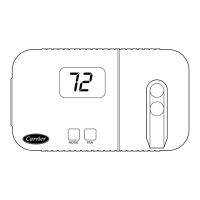
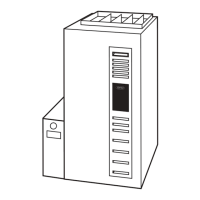
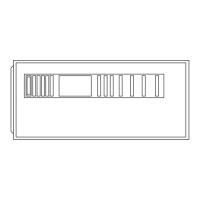


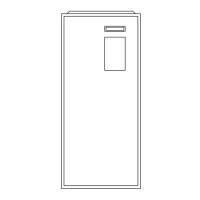
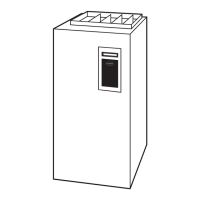



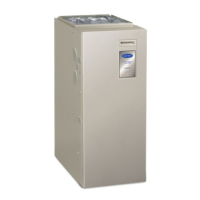

